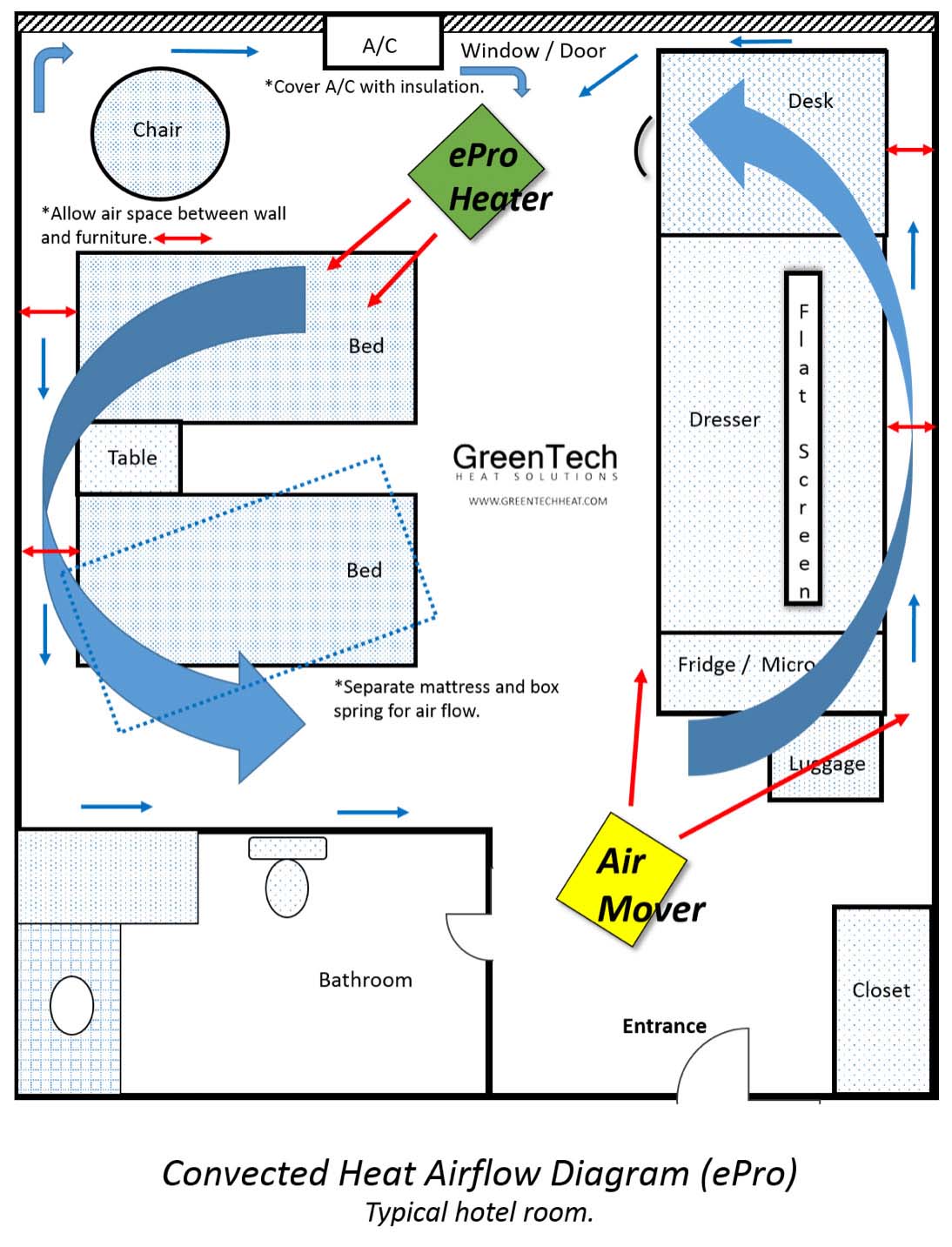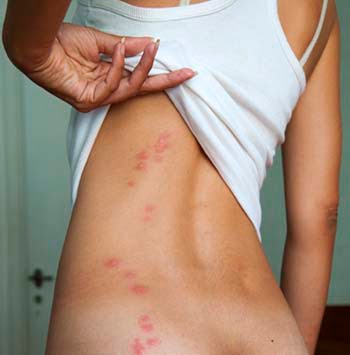To DIY heat treatment for bed bugs, use a steamer on surfaces and apply heat with a clothes dryer or hot car. Additionally, use a hand steamer on cracks and crevices to kill bed bugs and their eggs.
Proper heat treatment can effectively eliminate bed bugs without using harmful chemicals. By following these steps, you can effectively treat bed bugs in your home without the need for professional assistance, saving time and money. This approach not only ensures a safe environment for your family but also provides peace of mind knowing that your home is free from these pesky insects.
Implementing proper heat treatment can address the bed bug infestation, bringing comfort and relief to your household.
Understanding Bed Bugs
Before attempting any DIY heat treatment for bed bugs, it’s crucial to understand the characteristics and behavior of these persistent pests. Bed bugs are small, reddish-brown insects that feed on the blood of humans and animals. They are not an indication of poor hygiene and can be found anywhere, from clean homes to upscale hotels.
Bed bugs have a three-stage life cycle including egg, nymph, and adult. The eggs are tiny, about the size of a pinhead, and are laid in cracks and crevices. Once hatched, the nymphs go through five molting stages before reaching adulthood. They require regular blood meals at each stage of development to survive.
- Bites on the skin, often in a linear pattern
- Musty odor in infested rooms
- Small bloodstains on bedding
- Dark spots of bed bug excrement on sheets and mattresses
Benefits Of Diy Heat Treatment
When it comes to tackling a bed bug infestation, many homeowners opt for do-it-yourself (DIY) heat treatment as an effective and eco-friendly solution. This method involves raising the temperature of the infested area to a level that is lethal to bed bugs. While professional heat treatments are available, DIY heat treatment offers several benefits, including cost-effectiveness and a non-toxic approach.
Cost-effectiveness
DIY heat treatment for bed bugs is cost-effective, especially when compared to hiring professional exterminators. By using readily available household items, such as a portable steamer or a hairdryer, homeowners can effectively eliminate bed bugs without incurring substantial expenses. Additionally, DIY heat treatment provides a long-term solution, potentially saving money on future extermination costs.
Non-toxic Approach
One of the primary benefits of DIY heat treatment for bed bugs is its non-toxic approach. Unlike chemical-based pesticides, heat treatment does not involve the use of harmful substances that can pose risks to human health or the environment. This method targets bed bugs, their eggs, and larvae through the application of heat, making it a safer and more sustainable option for eliminating infestations.
Preparing For Heat Treatment
Remove excess items like clothes and papers to prevent blocking heat circulation.
Wash all bedding in hot water followed by high-heat drying to eliminate bed bugs.

Credit: m.youtube.com
Executing The Heat Treatment
Executing the heat treatment is a crucial step in getting rid of bed bugs infestation. It involves selecting the right heating equipment and raising the room temperature to a level that eliminates these pesky pests. In this section, we will discuss these two aspects in detail to help you effectively carry out the heat treatment.
Selecting Heating Equipment
When it comes to DIY heat treatment for bed bugs, selecting the right heating equipment is key to success. Here are some important factors to consider:
- Choose a heater with a sufficient heat output to reach high temperatures required for bed bug extermination. A heater with at least 150 degrees Fahrenheit (66 degrees Celsius) heat output is recommended.
- Look for a heater that is portable and easy to maneuver around your home. This will allow you to effectively heat all infested areas and furniture.
- Ensure that the heater has built-in safety features, such as automatic shut-off if the temperature exceeds a certain level. Safety should always be a top priority when using heating equipment.
By considering these factors, you can select a suitable heating equipment that will help you effectively eliminate bed bugs from your home.
Raising Room Temperature
Once you have selected the heating equipment, it’s time to raise the room temperature to a level that will eradicate bed bugs. Follow these steps:
- Start by removing any items from the room that are sensitive to high temperatures, such as candles, flammable materials, and electronics.
- Close all windows, doors, and vents to create a sealed environment. This will ensure that the heat remains trapped inside the room.
- Position the heating equipment strategically in the room to evenly distribute heat. Place it in an area where it can emit heat in all directions.
- Turn on the heater and set the temperature to at least 130 degrees Fahrenheit (54 degrees Celsius) or higher. This temperature is lethal to bed bugs at all life stages.
It is important to maintain the elevated temperature for a sustained period to ensure complete eradication. Keep the room temperature high for at least several hours. Monitor the temperature using a reliable thermometer to ensure it remains within the desired range.
Executing the heat treatment by selecting the right heating equipment and raising the room temperature appropriately is a DIY method that can effectively remove bed bug infestations. Follow these guidelines carefully to put an end to these unwanted pests and regain control of your home.
Safety Measures During Treatment
For safe and effective bed bug treatment, DIY heat treatment is a viable option. To ensure safety, carefully follow manufacturer instructions for heat treatment equipment. Protective gear such as gloves and goggles should be worn to minimize exposure to heat and chemicals.
Keep in mind to prioritize safety during the entire treatment process.
Protective Gear
During a DIY heat treatment for bed bugs, it is crucial to prioritize your safety. Wearing appropriate protective gear is the first step in ensuring your well-being throughout the process. This not only shields you from direct contact with heat sources but also minimizes the risk of potential burns or accidents.It is recommended to wear the following protective gear:– Thick gloves: Choose heat-resistant gloves that cover your hands and wrists completely. These gloves will protect your skin from accidental burns while handling hot objects or equipment. – Long-sleeved clothing: Opt for clothing made of thick, non-flammable material that covers your arms and legs entirely. This serves as an additional barrier between your skin and heat sources. – Closed-toe shoes: Wear sturdy, closed-toe shoes to protect your feet from accidental burns or injuries caused by hot surfaces or falling objects. – Eye protection: Safety goggles or glasses with side shields are essential to protect your eyes from any flying debris or accidental splatters during the treatment.Monitoring Heat Levels
Maintaining consistent and optimal heat levels is key to the success of your DIY heat treatment for bed bugs. To ensure effective treatment and prevent any potential hazards, monitoring the heat levels throughout the process is essential. Here are some important points to consider:– Thermometers: Use reliable and accurate thermometers to measure the temperature in the treatment area. Place them at strategic locations to obtain an accurate representation of the heat levels. – Regular checks: Regularly monitor the temperature readings at different intervals during the treatment. This helps assess if the desired heat levels are being reached and maintained. – Adjustments: If the heat levels are not reaching the desired temperature, make necessary adjustments to your heating equipment. This may involve repositioning the heat sources or increasing their power, depending on the situation. – Heat distribution: Pay attention to the distribution of heat throughout the treatment area. Ensure that all corners, crevices, and potential bed bug hiding spots are adequately exposed to the desired heat levels for effective elimination.Remember, safety should be your top priority when undertaking a DIY heat treatment for bed bugs. By wearing appropriate protective gear and closely monitoring the heat levels, you can minimize risks and ensure a successful treatment.
Credit: greentechheat.com
Post-treatment Procedures
After treating your home for bed bugs, it’s crucial to implement a heat treatment to ensure the complete eradication of these pests. DIY heat treatment involves raising the temperature in infected areas to a level that kills bed bugs and their eggs, providing an effective post-treatment procedure for lasting results.
Ventilating The Area
After heat treatment, open all windows and doors to allow fresh air circulation. Ensure the area is well-ventilated to help dissipate any lingering heat and chemicals.Inspecting For Surviving Bugs
Thoroughly inspect the treated area for any signs of live bed bugs post-treatment. Look out for any evidence of surviving bugs to address them promptly if found.
Credit: azexpest.com
Frequently Asked Questions For How To Diy Heat Treatment For Bed Bugs?
How Effective Is Diy Heat Treatment For Bed Bug Infestations?
DIY heat treatment for bed bugs can be effective in killing both adult bugs and their eggs. Heat treatment is a non-chemical method that uses high temperatures to kill bed bugs in all stages of development. However, it is important to ensure that the heat reaches all areas where the bugs may be hiding to achieve maximum effectiveness.
What Are The Benefits Of Using Heat Treatment For Bed Bugs?
Using heat treatment for bed bugs has several benefits. It is an eco-friendly solution that does not involve the use of harmful chemicals. Heat treatment can reach areas that are difficult to access, such as cracks and crevices, ensuring that all bed bugs are eliminated.
It is also effective in killing bed bug eggs, preventing re-infestation.
Can Diy Heat Treatment Be Used As A Standalone Solution For Bed Bug Infestations?
DIY heat treatment can be effective as a standalone solution for bed bug infestations, but it is recommended to combine it with other methods for best results. Heat treatment should be complemented with thorough cleaning, decluttering, and the use of bed bug-proof encasements on mattresses and box springs to prevent re-infestation.
Consulting a professional pest control service is also advised for severe infestations.
Conclusion
In a bed bug infestation, DIY heat treatment is an effective solution. Remember to follow safety guidelines and thoroughly heat all affected areas. With patience and persistence, you can successfully eliminate bed bugs from your home without the need for costly professional help.
Take control of the situation today.

I’m MD Tanvir, and I bring years of expertise gained from working closely with pest control companies to the forefront. My journey in the industry has inspired me to launch Bug Battler, a platform aimed at equipping people with the know-how to combat pests autonomously. Through Bug Battler, I aim to empower individuals with practical insights to tackle pest infestations effectively.

